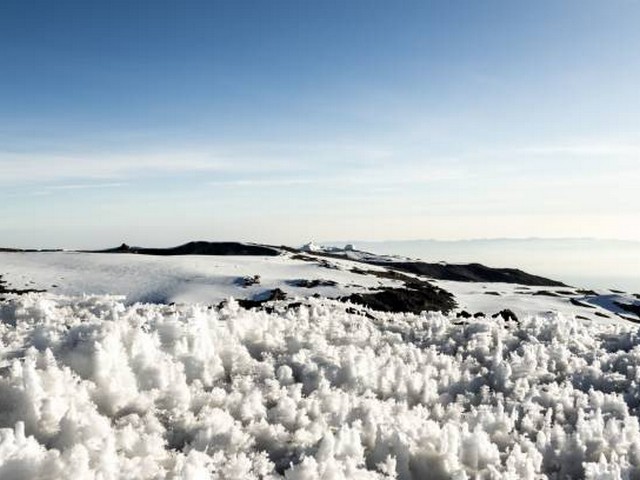Reach the Roof of Africa: Mastering Your Kilimanjaro Trek with KCTE
Introduction: Why Climbing Kilimanjaro is More Than Just a Trek
Imagine standing on the highest point in Africa, watching the sunrise spill golden light across icy glaciers and vast savannas below. This is the dream that draws thousands to Mount Kilimanjaro each year. At Kilimanjaro Centre for Trekking and Ecotourism (KCTE), we understand that reaching the summit of Kilimanjaro is a profound personal achievement and an unforgettable adventure. This blog post will share essential tips to dramatically increase your Kilimanjaro trekking success rate, ensuring your journey is not just attempted but conquered!
Understanding Kilimanjaro’s Unique Challenges
The Altitude Factor
Kilimanjaro stands proud at 5,895 meters (19,341 feet), a giant among the world’s iconic summits. The altitude is one of the biggest challenges trekkers face. As you climb higher, oxygen levels drop, and your body needs to adjust. Understanding and preparing for the effects of altitude is crucial for a successful summit attempt.
Varied Climatic Zones
From tropical rainforests to arctic conditions at the summit, Kilimanjaro offers a trek through drastically changing environments. Each zone presents its own challenges and wonders, requiring trekkers to be well-prepared with appropriate gear and information.
Kilimanjaro Trekking Success Rate Tips
Choose the Right Route for You
Kilimanjaro offers several routes, each with different characteristics, durations, and scenic opportunities. Longer routes like the Lemosho or Northern Circuit offer better acclimatization but require more days on the mountain. Shorter routes can be tempting but often have lower success rates due to less time for acclimatization. At KCTE, we recommend choosing a route that balances your time, budget, and physical condition.
Preparation is Key
Physical Fitness
Though Kilimanjaro is often touted as a "walkable mountain," the trek is physically demanding. Preparing with cardiovascular and endurance training months before your climb will boost not only your ability to succeed but also your enjoyment of the trek.
Mental Readiness
The mental challenge is as real as the physical. Condition your mind for success by setting realistic expectations, focusing on positive outcomes, and being mentally prepared for the tough moments.
Acclimatize Appropriately
Acclimatization can make or break your summit success. Consider a climb that incorporates extra acclimatization days. This could mean choosing a longer route or spending additional nights at key altitudes. KCTE offers tailored acclimatization schedules to help maximize your success rate.
The Right Gear and Support
Having the right gear is essential for your comfort and safety. Layered clothing, sturdy boots, and protection against the elements are must-haves. Moreover, climbing with a reputable operator like KCTE ensures you have professional guides, quality logistical support, and safety measures in place.
Hydration and Nutrition
Drink plenty of water and eat balanced meals during your climb. Hydration plays a crucial role in helping your body cope with altitude, and proper nutrition can keep your energy levels steady.
Why Choose KCTE for Your Kilimanjaro Adventure?
At KCTE, we’re not just about guiding you to the top; we’re about creating life-changing experiences with high success rates. Our expert guides are trained to focus on safe, responsible trekking practices and are passionate about helping each trekker achieve their summit dreams. We offer a variety of routes tailored to different needs and preferences, all designed to optimize your acclimatization and comfort.
Frequently Asked Questions (FAQs)
What is the best time of the year to climb Kilimanjaro?
The best times are during the dry seasons: January to mid-March and June to October. These months offer the clearest skies and least precipitation.
How long does it take to climb Kilimanjaro?
It varies by route, but typically it takes between 5 to 9 days, depending on how well you need to acclimatize and your physical condition.
What is the success rate of KCTE climbers?
Our success rate is consistently above average, with most of our routes boasting success rates of 90% or higher, thanks to our focus on proper acclimatization and preparation.
Do I need special insurance to climb Kilimanjaro?
Yes, you should have travel insurance that covers high altitude trekking up to 6,000 meters.
Can I climb Kilimanjaro if I have no prior trekking experience?
Absolutely! Many of our successful climbers have had no prior high-altitude experience. However, physical fitness and preparation are essential.
Conclusion: Your Summit Awaits!
Climbing Kilimanjaro is a journey like no other, and with the right preparation, route, and support, you can enjoy a successful trek to the summit. Ready to stand on the top of Africa? Book your adventure with Kilimanjaro Centre for Trekking and Ecotourism (KCTE) today, and let us guide you every step of the way to achieving your mountain dreams. Your summit awaits!
Embark on this life-changing journey with us, where your success and safety are our top priorities. Reach out to KCTE today and let’s start planning your Kilimanjaro adventure together!




